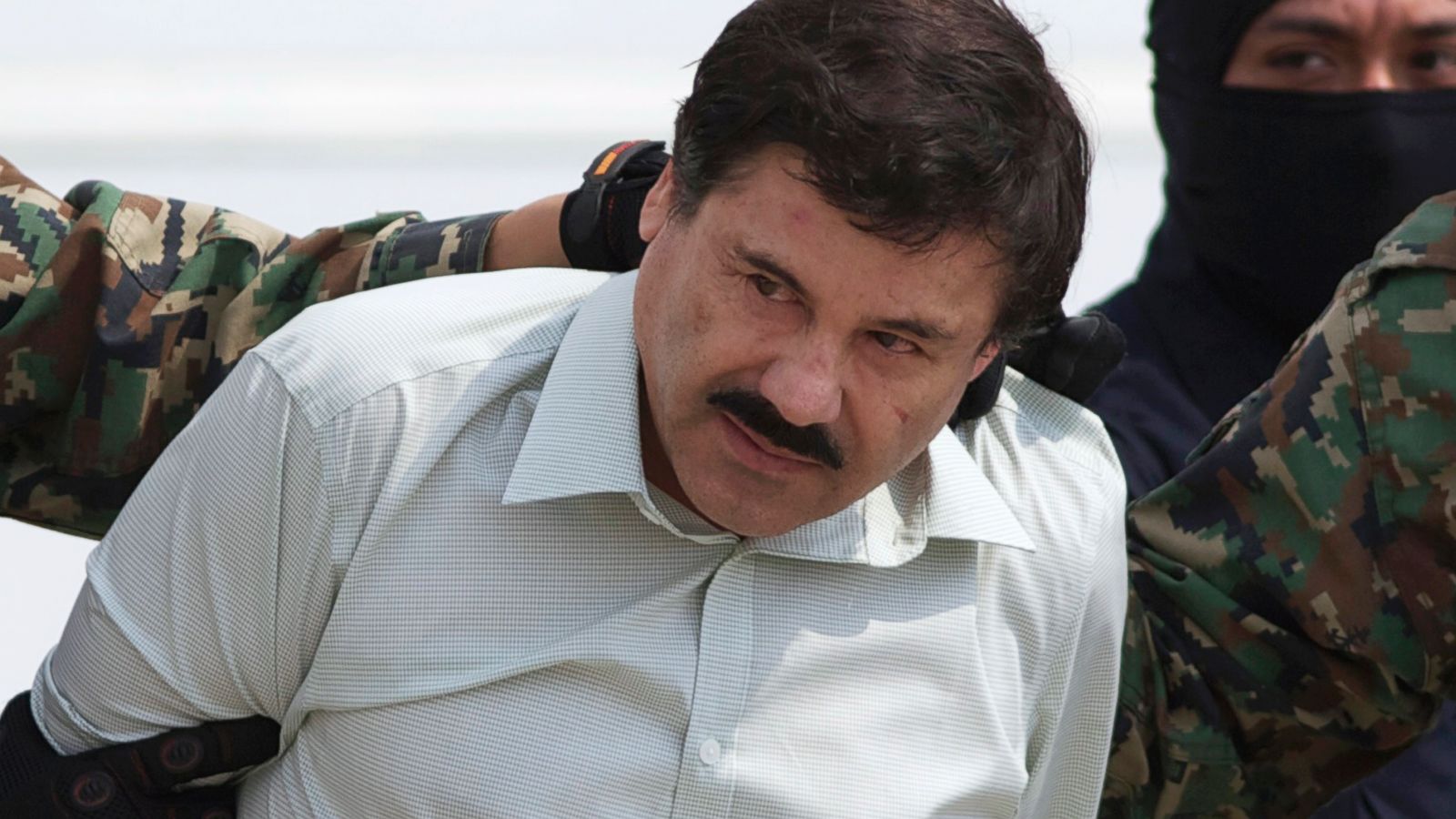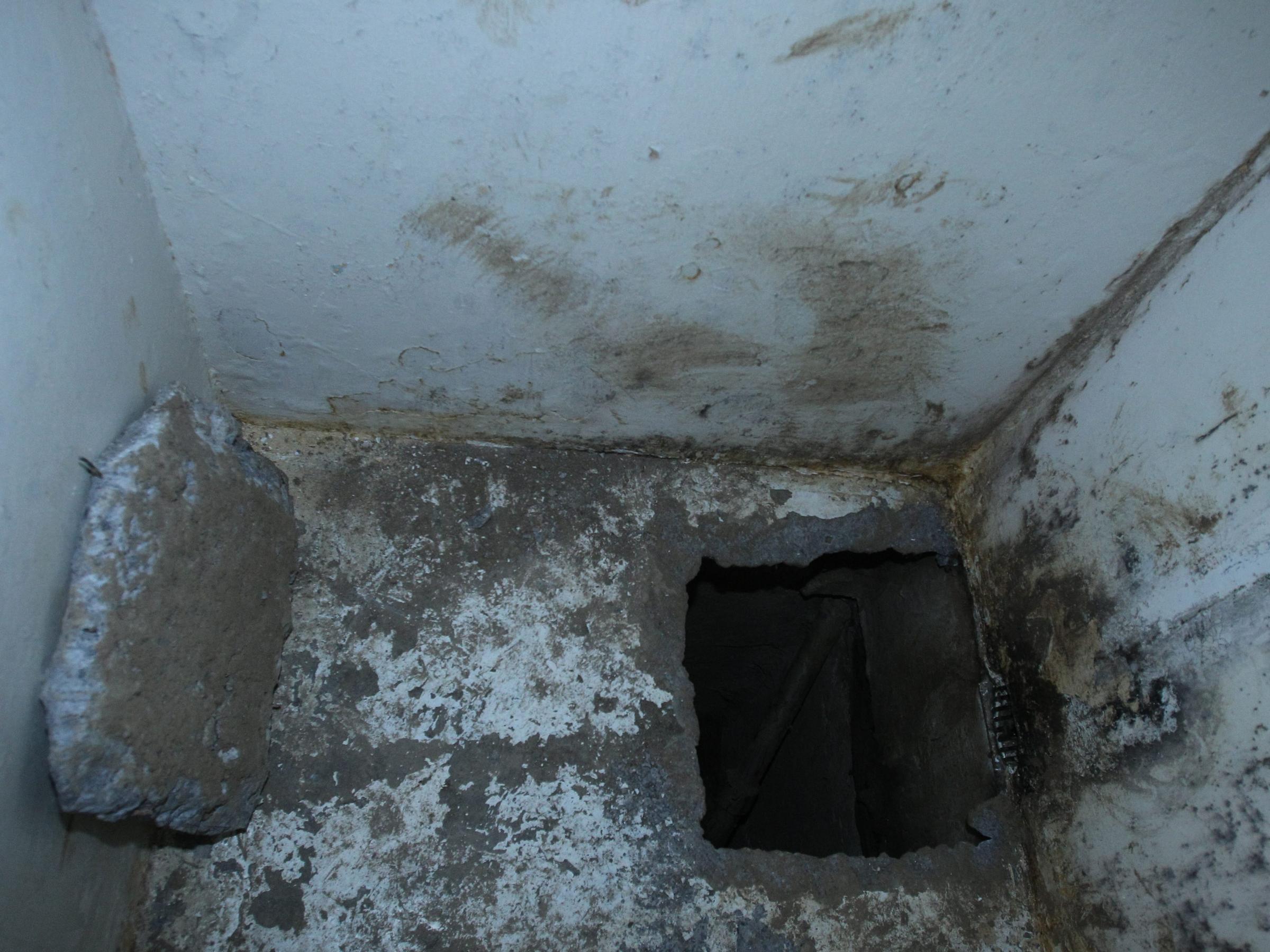Has El Chapo Escaped 2018
Feb 25, 2021 Kevin Hagen/AP Show More Show Less 2 of 5 FILE - In this Dec. 6, 2018 file photo, Emma Coronel Aispuro, wife of Joaquin 'El Chapo' Guzman, arrives to federal court in New York. Despite her status.

The story of notorious Mexican drug lord Joaquín 'El Chapo' Guzmán has it all: dozens of murders; billions of dollars of drugs smuggled around the world; two prison escapes that made Guzmán into something of a folklore hero.
His nickname may mean 'Shorty' in Spanish, but his reach was long. On Tuesday, jurors found Guzmán guilty on all 10 counts in his drug trafficking and murder trial at a federal court in New York City.
Kevin Hagen/AP Show More Show Less 2 of 5 FILE - In this Dec. 6, 2018 file photo, Emma Coronel Aispuro, wife of Joaquin 'El Chapo' Guzman, arrives to federal court in New York. Despite her status. The federal trial against the infamous Mexican drug lord and escape artist Joaquin 'El Chapo' Guzman ended in 2019 when he was sentenced to life in prison plus 30 years - and the kingpin's former. A timeline of Joaquin El Chapo Guzman from arrest, escape, capture, to trial. The billionaire druglord headed the notorious Sinaloa cartel. June 1993 - Captured in Guatemala and sent to a maximum.
60 Minutes correspondent Bill Whitaker has been covering the almost-mythical criminal pedigree of the Mexican drug lord since he was captured in Mexico in 2014. Here are some of those reports.
2014: Public Enemy Number 1 is caught
When Mexican marines captured Guzmán in 2014, he had been on 13-year run from the law after escaping from a Mexican prison in 2001. He was the most wanted man in the world; his international drug cartel put him at the top of the list.
'Making billions of dollars, having a reach around the world in Asia, Australia, in Africa, in Europe; putting poison on the streets, not just in the United States, but all over the world,' Derek Maltz told Whitaker in the video above. Maltz was in charge of the DEA's Special Operations Division tasked with finding Guzmán.
After years of independent searching, Mexican law enforcement had teamed up with several U.S. law enforcement agencies to track the drug lord. After streamlining their efforts, the group tracked Guzmán to a non-descript house in the midst of a middle-class Mexican neighborhood. But as soon as the Mexican marines arrived, Guzmán escaped down a tunnel underneath his bathtub.
Maltz feared the drug lord would continue evading arrest. 'I never believed that he would ever be captured,' he said.
But the Mexican marines were relentless. With the help of American law enforcement, they tracked Guzmán to a beachfront building in Mazatlán, where they finally captured him and arrested him.
'We did not ever anticipate that he'd be captured alive,' said Jim Dinkins, who was head of Homeland Security Investigations and had pursued Guzmán for more than a decade. 'We thought he'd fight to the death.'
2015: 'El Chapo' escapes from prison
When Did El Chapo Escape
Guzmán had already escaped from prison once. In 2015, he did it again.
Where Is El Chapo Today
Almost from the moment he was delivered to Altiplano Prison, a maximum security facility in Mexico, a construction crew from his Sinaloa cartel began digging a tunnel to free him. From almost a mile away, Guzmán's men dug down about three stories and then burrowed 4,921 feet straight toward Altiplano. The tunnel went under the prison wall and beneath the plumbing — and with remarkable accuracy, emerged straight into Guzmán's shower stall.
'It's very difficult to navigate underground,' Dinkins said. 'This tunnel, I believe, went from point A to point B with only minor deviations, if any. And that is an engineering marvel in and of itself.'
DEA Chief Chuck Rosenberg told Whitaker how he thought it might be possible: corruption and bribes within Mexican law enforcement.
'I don't know specifically how high up they reach,' Rosenberg said. 'My sense is that they're both broad and deep, that they go throughout the Mexican government.'
Joe DiMeglio, the chief of the San Diego Tunnel Task Force, told Whitaker that he wasn't sure Guzmán would ever be caught again.
2016: Recapturing 'El Chapo'
But unlike the first time Guzmán escaped from prison, he became sloppy the second time around. After his daring breakout in 2015, the drug lord seemed to become almost delusional.
'He became drunk on his own wine,' said Peter Vincent, a senior official and legal adviser of both the Justice Department and Homeland Security during the international manhunt for Guzmán. 'He started to believe the hype that he was special, that he was almost a demigod, that he was something truly magical. And he became so incredibly arrogant that he thought he was untouchable.'
He wasn't. Only 20 days after his escape, the Mexican marines had picked up on Guzmán's trail.
Intelligence tracked him to a house in the coastal town of Los Mochis in northern Sinaloa. Wiretap intercepts picked up on a visit planned by 'grandma and aunt'—code names for Guzmán and his lieutenant. Then, 'grandma' finally showed up. As an assault force moved into position, an armored truck left to go pick up food for a party.
'For an incredibly savvy, clever, almost a criminal genius that El Chapo Guzmán was, he ultimately was done in by very simple tastes: tacos, tequila, and chicas,' Vincent said.

Guzmán was arrested again. Mexican federal police took him to a motel instead of jail — a move Vincent said indicates that Guzmán had likely threatened his captors. But the Mexican marines appeared and apprehended Guzmán for a last time, flying him to Mexico City for booking.
The trial began in November, and jurors deliberated for more than 30 hours over six days before reaching their verdict. Guzmán now faces life in a U.S. prison.
Emma Coronel Aispuro may not be a household name, but the U.S. Justice Department believes she was a key accomplice of the most notorious international drug trafficker of the 21st century: Joaquin “El Chapo” Guzman.
She also is his wife.
Coronel Aispuro, 31, was arrested Monday, February 22, at Dulles International Airport near Washington, D.C. The following day, a judge ordered her held without bond after prosecutors argued that she is a flight risk.
The former teenage beauty queen is charged with conspiracy to distribute cocaine, methamphetamine, heroin and marijuana in the United States. She faces 10 years to life in prison and a fine of up to $10 million.
Officials did not reveal how they knew Coronel Aispuro was traveling to the United States, but it appears she was oblivious to the fact that she faced the possibility of being arrested.
Prosecutors allege that Coronel Aispuro helped her husband, then boss of the Sinaloa Cartel, to escape from Mexico’s Altiplano federal prison in 2015. Guzman escaped by exiting his cell through a hole beneath the shower and descending into a lighted tunnel that ran almost a mile away from the prison. Court papers contend that Coronel Aispuro worked alongside Guzman’s sons, Ivan, Alfredo, Ovidio and Joaquin, and another person, who is now a government witness, to build the tunnel and execute the escape.
Coronel Aispuro was a familiar presence at Guzman’s 2018-2019 trial in Brooklyn, New York. She attracted paparazzi outside the courthouse with her stylish attire and frequently waved and blew kisses to the defendant during the proceedings. She claimed to know nothing about the Sinaloa Cartel, suggesting Guzman was the humble owner of an irrigation company.

The jury did not agree with Coronel Aispuro’s depiction of her husband. He was convicted and sentenced to life in prison plus 30 years. Guzman, 63, will spend the rest of his life in the federal “supermax” prison in Florence, Colorado.
Emma Coronel Aispuro
Coronel Aispuro has dual citizenship. She was born in Santa Clara, California, when her mother was visiting relatives, but she grew up in rural Mexico. She met Guzman when she was 17 years old. They married when she turned 18 and had twin daughters in 2007.
Her claims of ignorance of the Sinaloa Cartel are not convincing to investigators because her father, Ines Coronel Barreras, was a cartel member (he is now in prison), and her brother was involved as well.

“Coronel grew up with knowledge of the narcotics trafficking industry,” FBI special agent Eric S. McGuire states in an affidavit supporting the criminal complaint. “Based on my investigation, I know Coronel understood the scope of the Sinaloa Cartel’s drug trafficking. She knows and understands the Sinaloa Cartel is the most prolific cartel in Mexico.”
Beyond her familiarity with the cartel’s activities, investigators believe she was an active participant, relaying messages regarding drug trafficking matters from the imprisoned Guzman to his lieutenants.
She also was heavily involved with her husband’s prison escape, according to government witnesses cited in the affidavit. Coronel, along with El Chapo’s sons and others, “agreed to organize the construction of an underground tunnel linked to Altiplano in order to facilitate Guzman’s escape from prison.” The plot involved purchasing a piece of land near the prison, where a structure was built to disguise the tunneling work. The plan also included delivering a GPS watch to Guzman in prison “in order to pinpoint his exact whereabouts so as to construct the tunnel with an entry point accessible to him.”
After Guzman was recaptured in 2016 and returned to Altiplano prison, he met with Coronel Aispuro and again discussed escape plans. But then Guzman was transferred to a prison in Ciudad Juarez, According to the affidavit, Coronel Aispuro told the government witness that “approximately $2 million had been paid to the Mexican official who oversaw the Mexican prisons to facilitate the transfer” back to Altiplano. However, the transfer did not happen, and Guzman was extradited to the United States on January 19, 2017.
In the affidavit, McGuire describes his extensive investigations of the Sinaloa Cartel. “I have debriefed more than one hundred members, former members, and associates of the Sinaloa Cartel, including but not limited to a high-ranking associate of Guzman,” McGuire states, referring to the cooperating witness.
McGuire states that Guzman and Ismael Zambada Garcia, known as “El Mayo,” “were the co-leaders of the Sinaloa Cartel from 1989 to 2016.” He says they “controlled drug trafficking routes from South America to the United States, importing tons of cocaine, heroin, methamphetamine, and marijuana,” and they “created an umbrella of security and corruption that permitted other drug traffickers to operate throughout Mexico.”
El Mayo remains at large, and is believed to be hiding out in the mountains of Sinaloa.
Geoff Schumacher is vice president of exhibits and programs for The Mob Museum.
Most Popular

Archives
El Chapo Escape From Prison
- [+]2021
- [+]2020
- [+]2019
- [+]2018
- [+]2017
- [+]2016
- [+]2015
- [+]2014
- [+]2013
- [+]2012